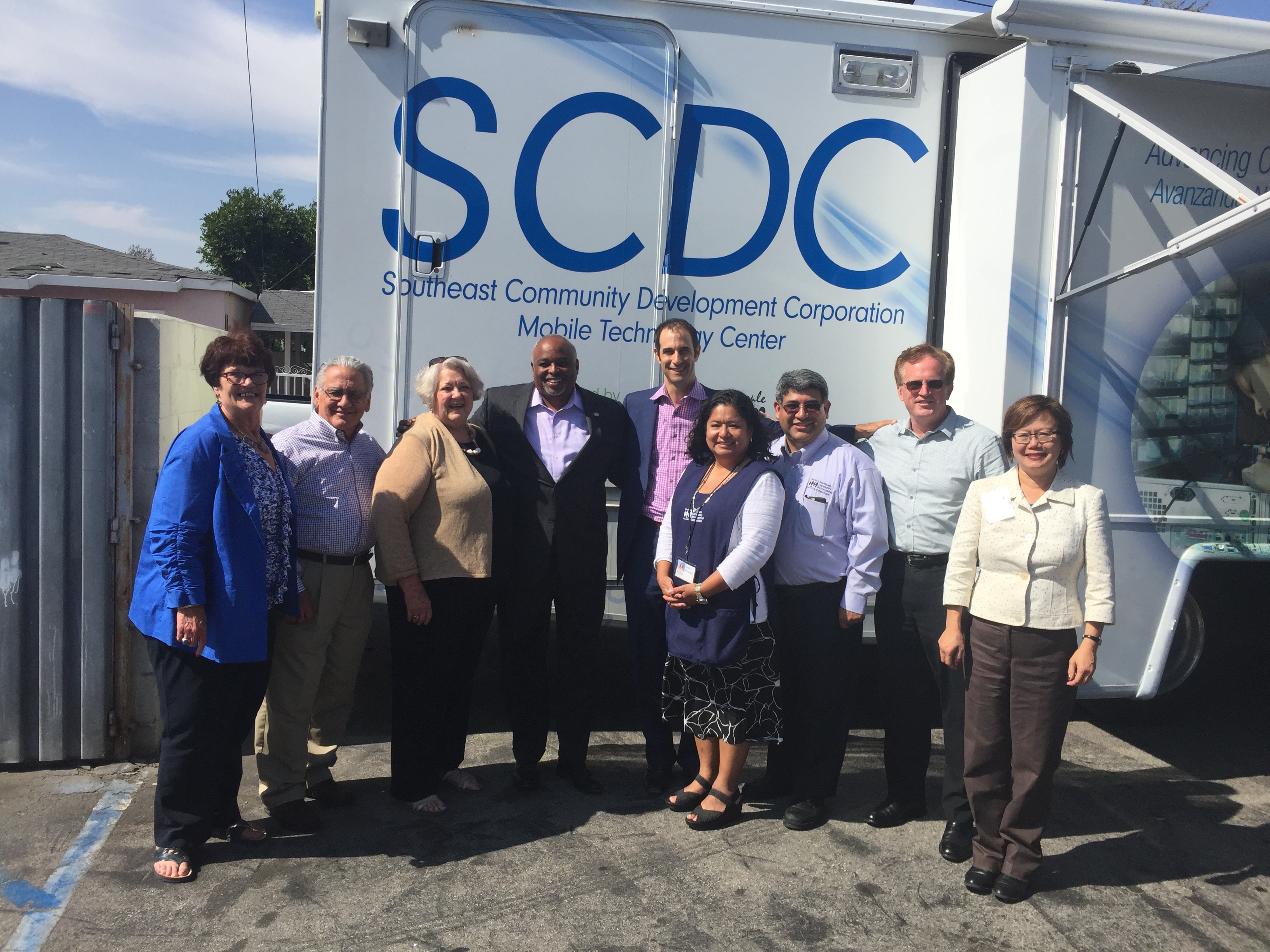Internet Connectivity and the “Digital Divide” in California Households is a summary report of the CETF 2016 survey that tracks the progress of broadband deployment and adoption throughout California. The Annual Survey found 84% percent of California households have a broadband connection at home. Among the 84% with a home high-speed Internet connection (referred to generically as “broadband”), 14% have a smart phone only, while 70% report having broadband Internet access through a computing device. The Annual Survey confirms that the most disadvantaged residents remain offline and “under-connected.”
Cost is by far the single biggest factor preventing those without Internet connectivity at home from going online. Of those without Internet access at home, three in four (74%) cite its expense or not having a computer or smart phone as a reason for not being connected, and 39% say this is their main reason. Only 2% of all residents are not interested in broadband service, confirming that the vast majority of Californians do want to participate in the digital world.
According to Annual Survey, several California demographic groups have home broadband adoption rates that fall more than 10 percentage points below the overall adoption* rate of 84%. They include:
- Households earning less than $22,000 (68%)
- Adults 65 or older (56%)
- Spanish-speaking Latinos (69%)
- Not a high school graduate (63%)
- Adults who identify having a disability (71%)
“The Annual Survey details how the lowest-income, least-educated and most-rural Californians are living without an essential tool to access the educational, employment, healthcare and civic engagement opportunities that lead to greater economic opportunities and a better quality of life,” said Sunne Wright McPeak, President and CEO of the California Emerging Technology Fund. “We call on the California Legislature to refund the California Advanced Services Fund and to pass the Internet for All Now Act to ensure digital access and digital literacy for all. High-speed Internet access is a 21st Century Civil Right.”
The CETF Annual Survey, this year in collaboration with the 2016 Field Poll, has been conducted since 2008. Please see the CETF Press Release and the Field Poll Press Release issued on August 1, 2016.
We welcome your comments on the survey results and your suggestions on questions or demographic information that should be included in future surveys. Your assistance to better understanding how broadband and digital technologies can improve the economic productivity and quality of life for all Californians is appreciated. Please contact susan.walters@cetfund.org if you have any questions.
*This percentage includes adults accessing the Internet at home with a smartphone or through DSL, cable, satellite or fiber optic connections to a home desktop, laptop or tablet computer.
Note:
The term “divide” is used to refer to significant differences in conditions and/or behaviors between and among major demographic segments of the population and the overall population as a whole. The term “Digital Divide” refers to the situation in which significant segments of the population do not have access or are not using technology at the same rate and manner as the average experience in the population-there are wide differences in access to and use of broadband (a generic term for high-speed Internet service, including both wireline and wireless technologies). For example, in 2008 when the baseline Annual Survey was conducted regarding broadband adoption in California, 55% of the overall population had broadband service at home, but there were large disparities among the demographic groups and regions: low-income households (under $40,000 annual income) were 33%, Latino households were at 34%; and people with disabilities were 36% in comparison to black households at 66%, Asian households at 67%, and while white households at 68%. Broadband adoption for regions ranged from a low of 48% for the Los Angeles Region to a high of 65% in the Bay Area.
As a general rule in statistical variations, CETF recognizes that a “divide” exists if any segment of the population is 10 percentage points or more away from the population as a total (or average). That is why CETF set the 10-year goal for broadband adoption to be 80% with no one region or segment of the population less than 70%.

